Last week I put out our first 6 of our Top 11 lessons building Black Hops and in today’s post I’ll go through the final 5 lessons and some thoughts on navigating the brewery valley of death.
6. Don’t Get Too Creative But Also Get Very Creative
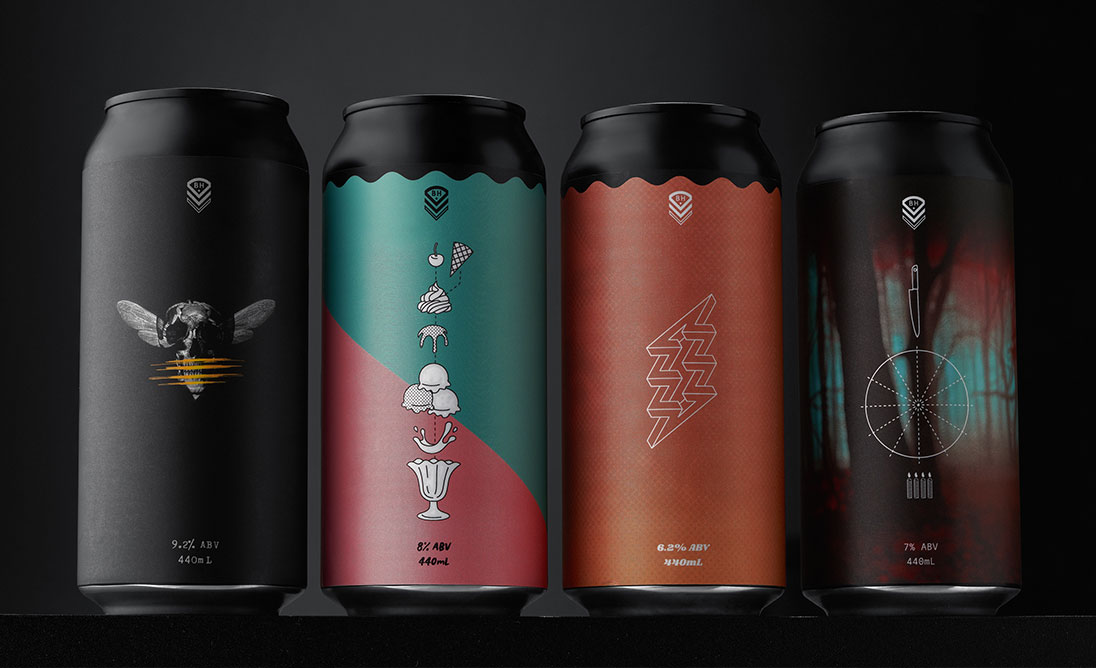
We’ve learned a few lessons when it comes to being creative with our beer releases. Early on we tried to only release weird and wonderful beers. The problem was that they didn’t really translate into big sellers. We made beers people liked but we didn’t really make any beers that were the common styles like Pale Ale and IPA.
Our Beach House was a good example, it was our take on the Farmhouse / Saison style. We dry hopped it with local hops and turned it into a more sessional beer for our climate. It was a great beer and actually won the Champion Belgian Style Ale at the AIBAs, but it was never a big seller.
Once we released our Pale Ale and our IPA, our sales went through the roof. To this day, our biggest sellers are by far our Pale Ale and our IPA and we’ve separated out our core range to our limited release beers. We get very creative and experimental with our limited releases, but the core range beers are all just our best example of a balanced beer in that particular, well known style. They sell very well as a result.
There’s plenty of room for creativity in designing beer cans and coming up with beer styles outside the core range. Our monthly limited releases are normally somewhere in between a core range beer and a taproom release in terms of weirdness and can design. Our taproom releases we get very carried away with the beer styles and the can designs.
If you look at our social media channels you’d be forgiven for thinking we mainly sell crazy beers. But the truth is we sell 80% core range, 10% monthly limited releases and about 10% taproom-only releases.
7. Taprooms Are Great!
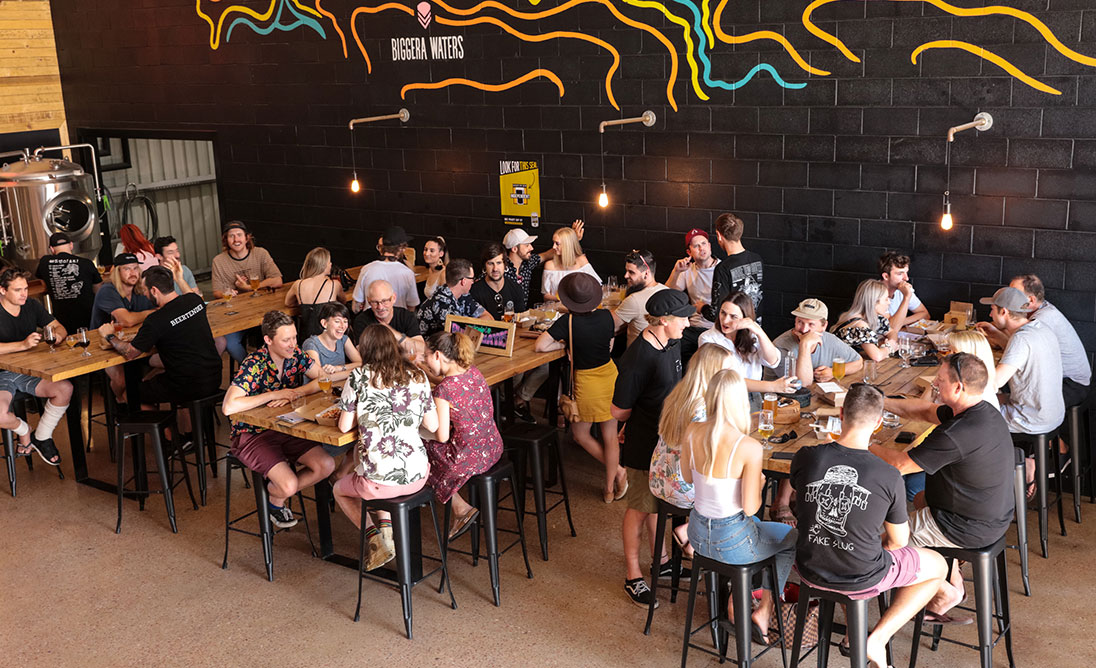
We sort of knew this before we started the brewery and it probably goes without saying, but taprooms are great. The obvious reason is the margin you make on the beer. When we cost out beer we include a margin in there for us and then we anticipate the margin for the reseller, and arrive at some kind of RRP. With the taprooms, we get to keep both lots of profit. Of course there are extra costs for having a taproom, particularly staff and rent and services etc, but the benefits are more than just a bit of extra margin.
Our taprooms have been the spiritual home of our ever-expanding brand. Our company has grown from the taprooms out. Early on, locals in Burleigh loved our HQ taproom for the great beer and great experience. This love spread out to surrounding venues. Before long we had a really solid wholesale business around the south end of the Gold Coast. But we didn’t have much up the north end of the Gold Coast. That was until we built Black Hops II and the BHII taproom. Once we did that, we noticed the same thing happening up the north end. The culture grows from the taprooms and extends into surrounding bars and bottle shops. The taprooms become this spiritual home for the brand and that brand value extends far beyond the taproom walls.
Our taprooms are an awesome meeting place for customers, and staff, a place to celebrate wins (like the GABS Hottest 100 countdown), a central place for managing the release of highly limited beers and they bring a buzz and a warmth to the brewery that wouldn’t otherwise exist. It’s hard to imagine building a brand that staff and customers love without a taproom. It has been done, but it’s pretty rare. I would suggest investing in the quality of the service, products, design and general offering at the taproom is an investment that is going to pay back in many not so obvious ways.
8. Never Stop Building The Community
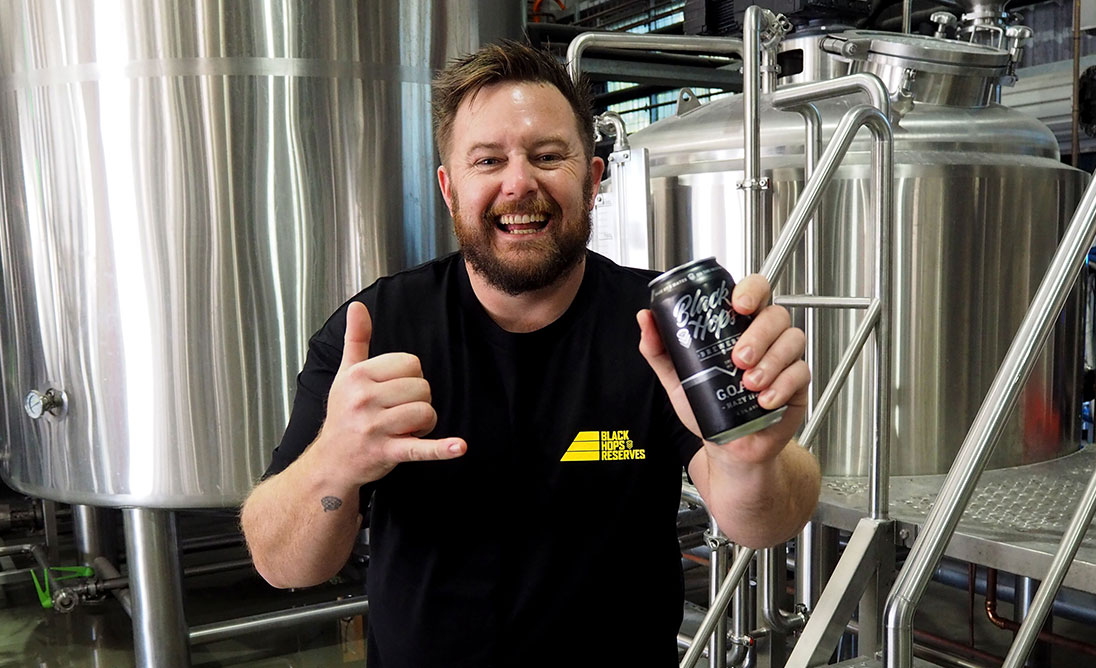
When you’re constantly focusing on making the product and internal operations and marketing and finance and all the other things that are day to day challenges of running a brewery, it’s easy to forget that if you don’t have a strong base of customers and community members, you won’t have a brewery at all.
From our very first crowdfunding round, our brewery has always been built from the community outwards. Here are some things we’ve done and continue to do to keep this trend going:
- Create an awesome experience at the taprooms with great products, a wide range of new beers, awesome service and education.
- Our tours are the pinnacle of the education aspect where we spend 1.5 hours with people taking them around Black Hops II and giving them the whole Black Hops experience.
- Getting local musicians and food trucks to the taprooms is another cool way to be part of the local scene. Plus it helps build the community between business owners, breweries and customers.
- We do things like staff anniversary beers which our taproom customers love because they know all the staff.
- We do things like our Alpha Team (investors) tasting nights and limited release product launches and brew days. We’ve even done a brew day just for a handful of our first taproom customers.
- Outside the taproom we also aim to be a good contributor to the local community donating to causes, doing Karma kegs, and helping with events like beach cleanups via our Community program.
- Online we take this even further by having a super engaged group of people via our social media channels and in particular via our Facebook group that are constantly engaging directly with the brand. We’ve brewed beers that have been thought up in the group, we have exclusive merch for group members and the founders and team are in the group constantly staying as close as they can to our most keen community members.
- Our Black Hops Reserves homebrew club and competition is another example where we are engaging a very core keen group of people.
- We also try to get out and collaborate with other brewers and be a good positive member of the craft beer community.
We think our great local communities are a huge part of our brand being understood and accepted in bars and bottle shops around the country. There’s a lot of love for Black Hops out there and we think it all starts by having a great relationship with our closest and best supporters. Word of mouth continues to be a very powerful way to build a brand.
9. Selling Beer is Not Easy
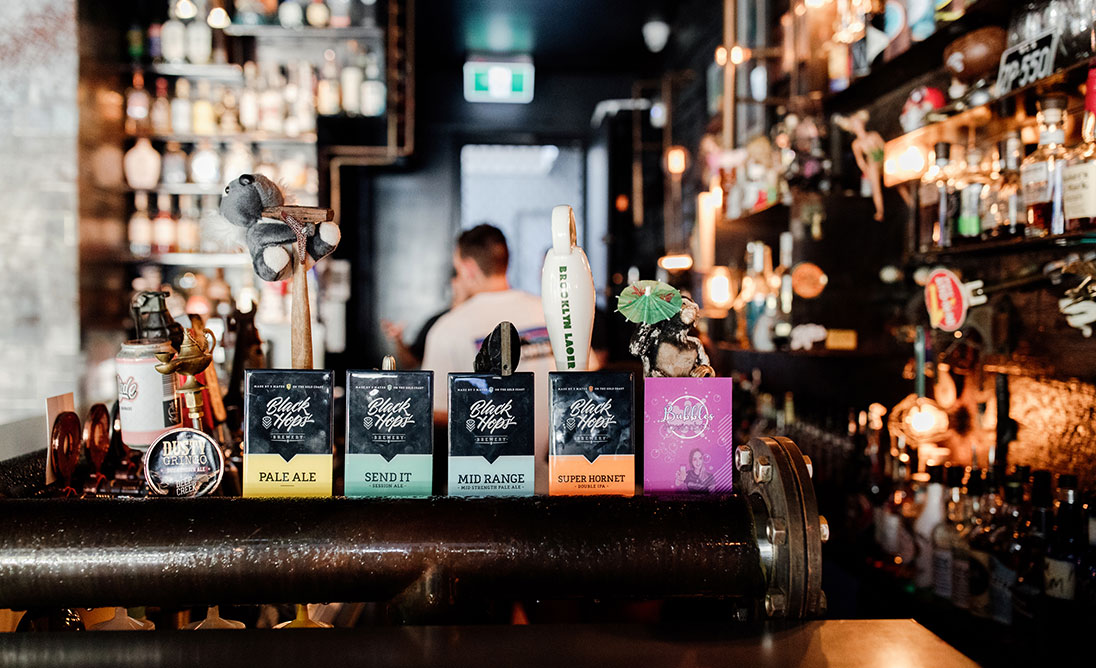
I’d love a business where you can just make something that sells itself. And you’d think if there is any business like that, it would probably be making beer. Unfortunately this isn’t the case. No matter how good your brand is and how good your product is, you are going to have to put in a lot of work to sell your beer.
We have a dedicated sales team that we break up into on prem and retail sales, each division with a manager and each team with dedicated roles in that division. Reps are expected to hit 10 site visits a day on field days and they have a day in the office for admin. We use Pipedrive for our CRM and all reps enter deals via their mobiles. We have weekly activity and sales targets and weekly and monthly reports. We have a monthly all hands meeting and constant communication via Slack and phone.
We have rules around sales samples, sales activations and procedures for supporting reps back in the office. We have a wage structure that encourages on prem reps to sell more, and we do a lot of tastings and events to help the brand. We also have some detailed rules around discounting and deals that make it simple for the reps to follow.
Focusing on the brand and the product is going to help a lot with sales but ultimately someone needs to knock on doors and move beers. Find people who are great at that and do your best to support them in their work.
10. Staff Are Critical

When we started Black Hops, Eddie and Govs worked full time and I was part time. We thought it would be a cruisy business to run that wouldn’t require a lot from me and would be an employment replacement for Eddie and Govs. It wasn’t long before we realised how wrong we were. For a time we tried to do everything ourselves, but after a year or two of long hours and bad results, we realised that we would have to get some staff in to help, and they would have to be great staff.
Our first hires were really critical, hiring great people to work the taproom and run sales, both areas that none of the founders had much experience in. It became obvious very quickly that having staff with these skills was really critical and these early staff helped us set the standard for all new hires within the company.
I think a big part of the growth we’ve experienced since early on, is to do with the experience we offered in the taprooms and the effort we put in via a few key hires in sales. We didn’t know it at the time, but hiring good people who had skills that the founders didn’t have, was a critical move.
Once the brand built up, hiring became a fair bit easier, although it can still be challenging. We have preferred to get people in part time first who prove themselves and go on to higher level roles. In the brewery, we’ve had to get experienced people externally to continue the brew quality from Govs on down through the rest of production. Most drivers, bar staff, canning crew etc started casual and have ultimately grown into full time roles as the business has grown around them (and because of them!).
We’ve also had to make hard decisions to exit staff who weren’t working out. This isn’t fun and is always a difficult and painful decision to make, but ultimately businesses like this don’t work without amazing team members that work perfectly with the culture and expectations of the company, and sometimes hard decisions have to be made.
11. A Marketing Edge is Helpful
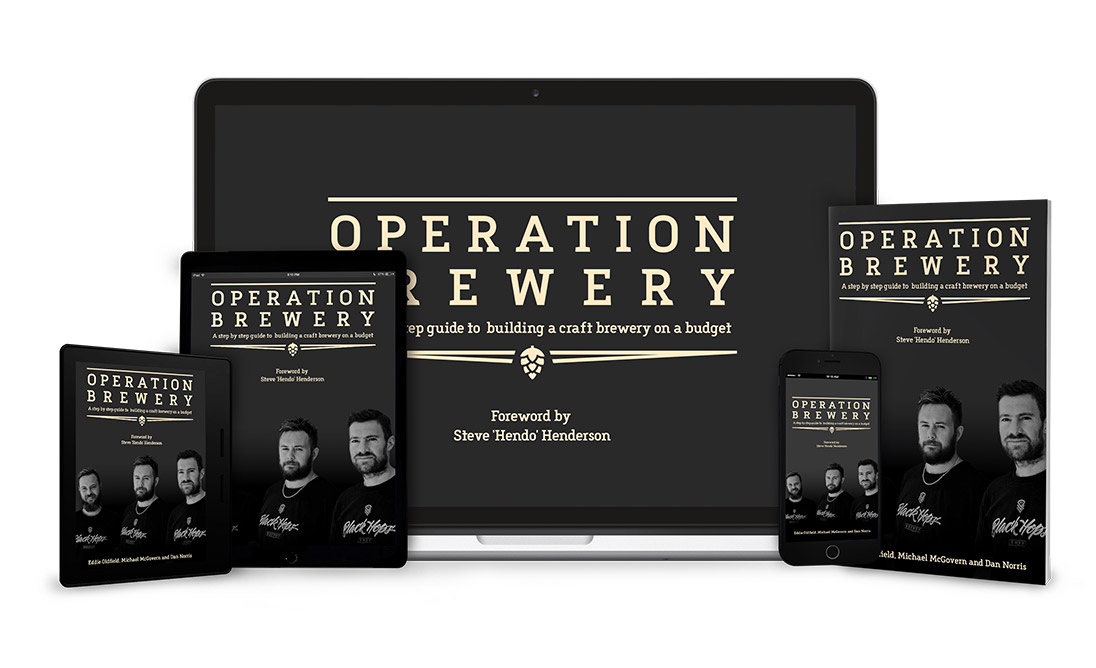
Most businesses spend 7-10% of their revenue on marketing. We aim to spend under 1%. We just don’t have the budget to be spending that kind of money and the margins on what we do are so slim, it would eat any chance we had at a profit.
Our marketing edge has always been that we have offered to share everything we’ve learned along the way, and bring in a new level of transparency into Aussie craft beer. It’s only a small thing, but it’s something, and it continues to work well for us.
We have always found ways to get valuable attention without paid spend. We do still undertake paid spending mainly for things like sales activations in bottleshops, and we do obviously spend quite a bit on packaging design and photography, but we spend almost no money on paid ads of any kind including Google or Facebook ads, sponsorships or anything similar.
What we do instead is look for organic ways to grow the brand that don’t cost us money. We focus on 4 platforms to make this happen:
- Brand / product – Make awesome beer, make sexy cans, get nice photos of them and share them on social media to get natural traction.
- Story – Tell our story and product and customer stories to help spread the word. Stories catch on and can turn into powerful word of mouth, beer names / blurbs, press opportunities etc.
- Community – We divide our audience up into groups and do our best to make these groups happy – For example we have groups of investors, home brewers, sales customers, ambassadors etc and we engage them all in different ways.
- Content – We produce as much content as we can. These days it’s a lot of social media posts but it’s also long blog posts (like this one), our newsletter and other targeted emails, our podcast, our book, interviews with other blogs / news sites.
Examples have included:
- A partnership to brew the world’s first Call of Duty beer.
- Being the first brewery to launch via Crowdfunding in Australia.
- Bring the first brewery to close an Equity Crowdfunding round in Australia.
- Submitting to beer awards and doing well including winning Australia’s Champion Small Brewery at the AIBAs (this does cost money but it’s well worth it if you do well).
- Doing well in things like the Beer Cartel Craft Beer Survey and Hottest 100 Craft Beer Countdown. A small amount of organic effort with these things can go a very long way if you do well.
- We’ve built up a decent email list that’s very active, 10,000+ people at the time of writing.
- We’ve built a really great Facebook Group for our Black Hops Ambassadors with 2,500 members who get behind us for things like the competitions above and general promotion.
- Our social media and website traffic has grown consistently over the years to a point where we have as much organic traction as almost any other independent beer brewery in the country. When we do our Instagram posts well, with nicely branded cans and great photos we’ll get 1,000+ likes, hundreds of comments and a reach of tens of thousands of people. This is all free other than the design of the can and the photo now that we’ve built up an engaged following.
Some Final Thoughts on The Valley of Death
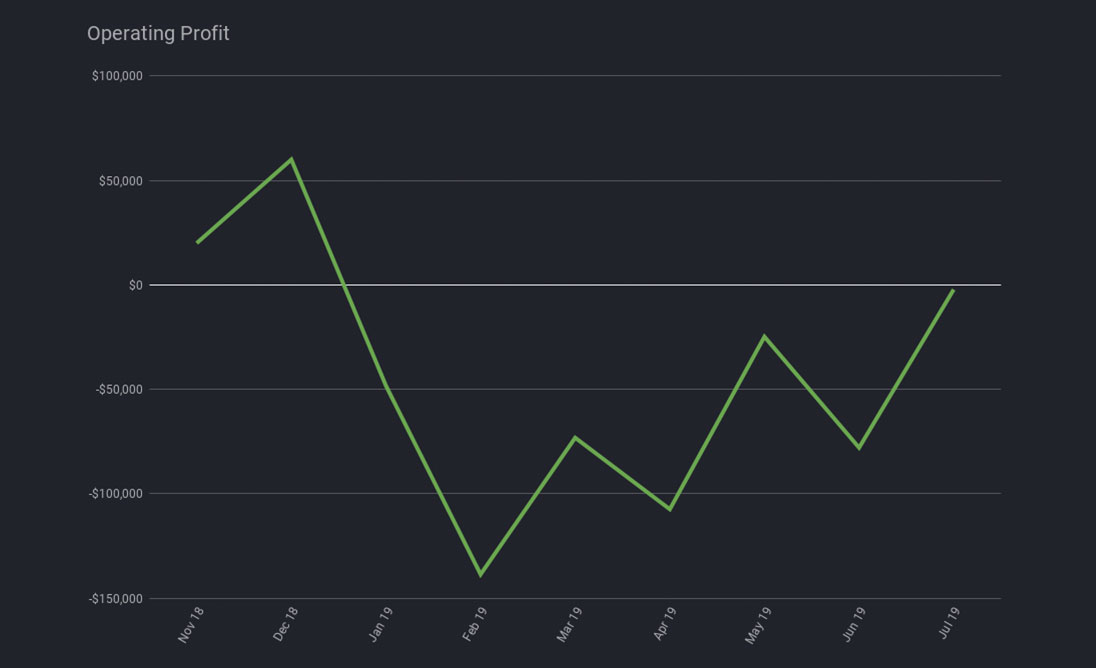
The biggest challenge we have faced has definitely been the jump from HQ to BHII. Our HQ site was in a great location but volume wise was only ever going to be good for about 400,000 – 500,000L per year.
Growing from that size to 1m+ is a very big jump. It’s not just about more beer, it’s a whole new level of manufacturing efficiency, equipment, quality and staff.
The only options for us to make that jump were:
- Contract brew at another location which we did not consider. I think it’s important for people to know we make the beer we sell.
- Shut down HQ and replace it with a bigger brewery at another site. This is not an option we considered because we love HQ, it’s built up an awesome local following and it’s in as good of a location as you can get on the Gold Coast, 300m to the beach in Burleigh Heads.
- Build another brewery and brew at both.
We chose option 3 and because we didn’t want to run into the same problem a year or two down the track, we built a much, much bigger one. BHII cost 10X as much, and had the potential to brew at least 10X as much beer. But it also cost a fortune to operate including rent and services and staff, and it took us a while to find our feet and get up to the scale necessary to make the new operation work. We lost hundreds of thousands of dollars in the process.
Looking back, we wouldn’t do anything differently because we’ve ended up with an awesome brewery and taproom at both ends of the Gold Coast. But it was a very stressful period and if you wanted to avoid that I suspect it would be easier to initially find a site that you can grow into at least to 1-3m litres at which point hopefully you can run that business profitably and get some bank support to build a really big site.
There is a general number in the industry that says once you get above 1m litres you should be able to do it profitably, but anything bigger than a small brewpub or taproom, it’s going to be difficult to be profitable until hitting that scale. I suspect this general rule is more often than not, incorrect. I think it depends on a lot of things and isn’t just a simple matter of volume.
These are the things I would be considering if you are looking at making the jump from a small brewpub to a larger distributed brand:
- Staff are extremely expensive. You have to be super careful when you hire new staff. We have some metrics around staff cost as a % of revenue for production and back-office staff that we try to stick to, to ensure this doesn’t get out of hand. It is particularly hard in certain times of the year too when sales tend to drop (like February).
- How much you charge has a big impact on your overall profitability. Know your numbers and make sure if you are pricing your beer at the level of the brewers operating at scale, you know the kinds of risks you are taking in doing that. We did it knowing we would lose money for a while until we got up to scale, but the extra volume helped us get to scale. It’s a big risk that we were happy to take and knew we were taking. But that’s not a risk that every owner and / or investor would want to take on for too long.
- The value of your brand has a massive impact on how fast your beer moves. If you have loads of beer distributed into lots of shops, but the brand isn’t strong and it doesn’t move fast, you will have high volume but it will be costing you a fortune to move the beer. It’s going to be way more difficult to make that situation comfortably profitable.
- The % keg vs pack is going to have a big impact on profitability. We have tried our best to keep keg sales at around 40% of our sales but with a lot of expansion via the major bottle shops it’s been impossible to hit this target. But we are conscious of it and too much sales in pack is going to make it harder to be profitable.
- We sell 80% of our beer locally even after 6 years running the business. If you are sending beer all around the country and don’t have a fast moving brand locally, this will have a negative impact on your profitability.
- Your taprooms will also have a big impact on profitability. Perhaps with the right mix it would be possible to grow profitably all the way through, or at least go close. We’ve never run a full scale brewpub, I suspect that model would be more likely to be able to get a brand to profitability but again comes with some risk and compromise.
- Having the one location I’m sure would make it much easier to retain reasonable levels of profitability. Having multiple sites complicates things a lot.
All that said, we were mostly unprofitable month to month from 500,000L up to around 1.2-1.5m litres. But I don’t think it was because of that volume number, I think it had a lot to do with the sales mix, the value of our brand and how quickly our beer moves when stocked.
Once we hit that volume, we were able to stop the money bleeding and invest a bit more in future growth. I suspect there might be a few more big jumps we have to make if things continue to go well for us.
Remember our experience is all we know, so don’t take this as advice, more just some inside info on what we have been through to get to where we are. Hopefully it was useful, all the best with your journey.
If you have any questions or comments, feel free to leave them below.
If you want the ebook with the content from both of these posts, you can grab it here.
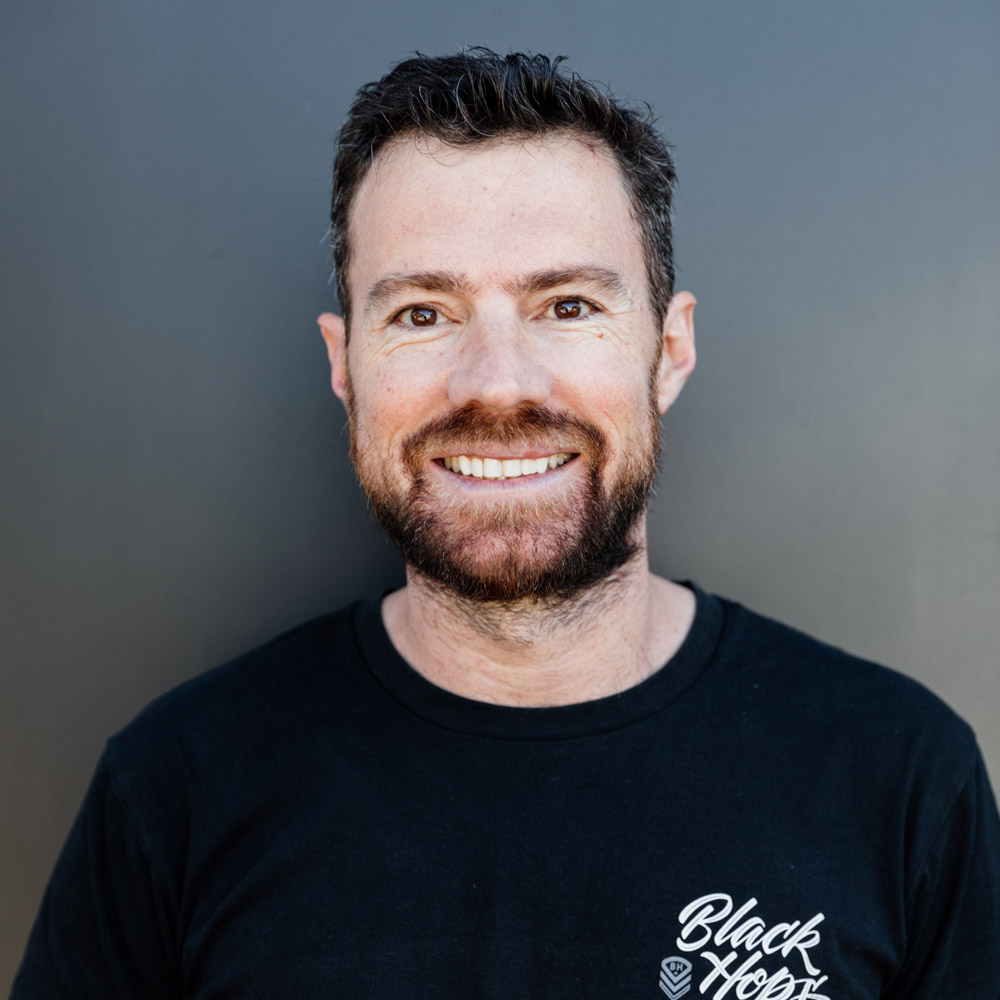
Dan is Co-founder at Black Hops.
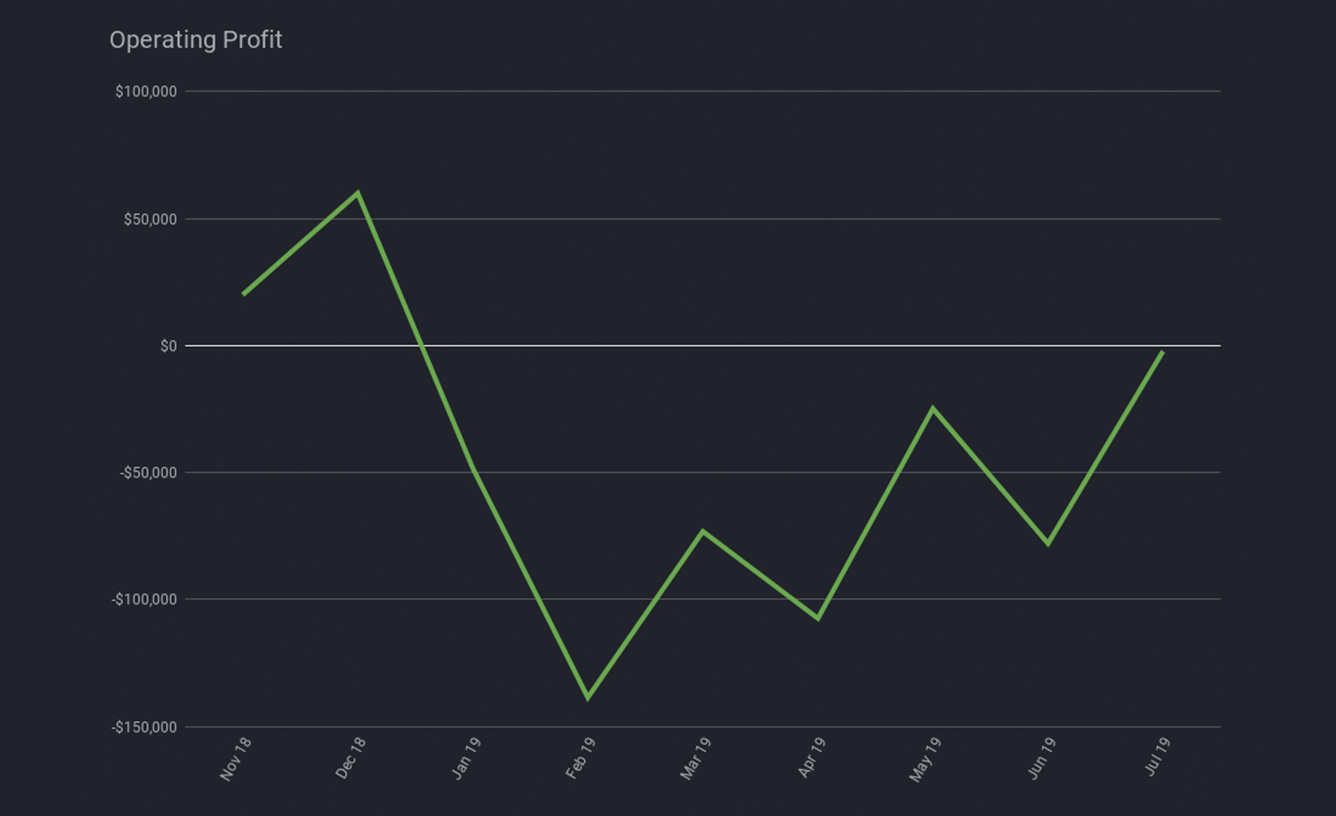
Tanks again for sharing your wisdom and learning Dan and Govs and Eddie. Onwards and upwards for you and your team
Thanks for a great detailed post. Look forward to the Brisbane Tap Room. Cheers